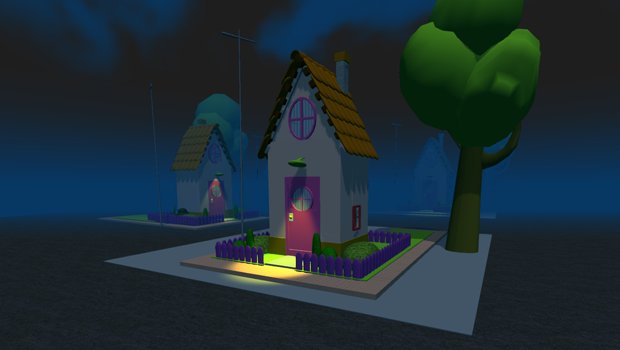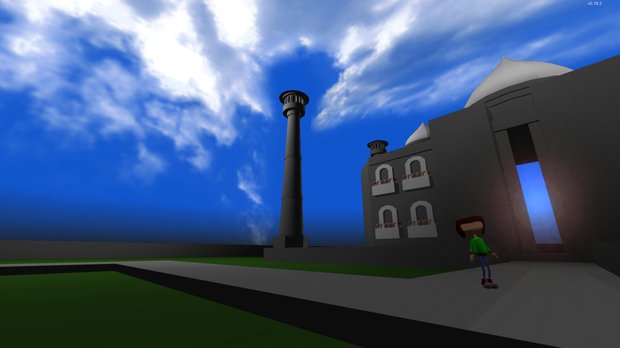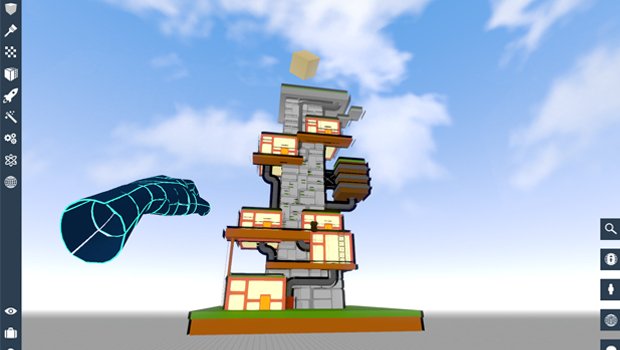The man who quit neuroscience to make video games
You probably haven’t heard of a game called UemeU. It’s a world-building game similar to Minecraft, although to simply refer to it as ‘world builder’ is perhaps doing it a disservice. It’s the brainchild of Jeremy Hindle, co-founder David Kaskel, and a small team of developers at Omnigon Games. Hindle himself used to be a neuroscientist, a highly intelligent guy who spent days actually saving lives and helping people. So why did he decide to give up a promising career in medicine to make video games?

“That’s quite a deep question,” laughs Hindle, as he chats to me over the phone. “I was working in a hospital a lot; I realised that I didn’t get as much of a kick out of simply helping people day to day, as I did when I actually saw people being positive. I discovered that I’d get more of a kick out of it when someone got really happy about my help.”
Hindle decided that he’d only really be patching people up in his medical career, bringing them back to a ‘normal’ level of happiness. And so he turned to games. Games had been an important, formative part of his childhood. “Well, when I was really ill--I had Hodgkins Lymphoma twice, actually--that was probably my first introduction to computer games,” he explains. “I had Mario on the NES, Battleships on the original Gameboy, stuff like that. Classic games. I was in one of those confinement rooms where you couldn’t meet people at all, so this was my bridge to outside world.”

Hindle has always believed in not only the inspirational power of games, but their ability to bring people together and help players through tough times. Prior to working on UemeU, Hindle created a Minecraft group called LPMinecraft, which took on gamers with social difficulties and taught them how to interact positively with others. It’s all about being part of a creative community.
“When two people go through a creative process together, towards a final goal, I believe that--if they’re part of this same thing, even if one person is more involved than the other--they start to share more personal things with one another. In quite a closed society, where people are more private about personal issues, you will actually see people share more during a shared creative process.”

That’s why Hindle started LPMinecraft. It gave him that ‘kick’ he got from really elevating people’s mental well-being above the norm. He continues to give an example of how it worked. “People were being taught not to abuse others, to accept everyone else. It was amazing how I saw people really develop. One guy, who was about 12, made this incredible transport network in Minecraft. It had road, railways--it was incredible. But when he first came to us he was ‘f’ing’ and swearing and completely acting out. After a month with LP, he was super well-behaved and a model member of the community. He would introduce new people, he would be polite, he’d even moderate. And when other people see that happen, they tend to act the same way themselves, so that kind of cycles itself too.”
And now we’re getting on to UemeU itself. Hindle decided that--as successful as it was--LPMinecraft could only realistically help a limited number of people. Increase numbers to much, and you lose the personal touch needed to make people feel welcome. So, he started work on UemeU. “One of the things I’m trying to achieve with UemeU--and this is something I think games are very well placed to do in general--is really cross boundaries in terms class divides, inequality, racial inequality. These things are international issues. Social divides exist, and there are all kinds of other barriers that exist between people, but when you’re playing a game you can interact with all kinds of people that you would never otherwise speak to or see.”
Weekly digests, tales from the communities you love, and more

He explains that UemeU has two modes for play. First is a create mode, that allows you to make not only ‘levels’ and ‘worlds’ but also more abstract concepts like ‘experiences’ and even ‘art’. Although the toolset at your disposal is fairly simple for beginners, there are layers that provide incredible depth for those smart enough to get to grips with it. The second mode just lets you play within another users world, even if they’re still building it. And that’s the point here. You don’t need to be super-creative to enjoy UemeU--you can drop into someone else’s game, chat to them, play their world, give feedback and help out. You become part of someone else’s creative process no matter what ‘type’ of gamer you are.

The creation possibilities in UemeU are impressive. Hindle tells me about some of the best things he’s seen in game. “What excites me most is when people use it for things that I don’t expect,” he explains. “One thing that came out recently was a person offered to do some graphics for us to go on our website. And what he did was, he created a load of the vector artwork in UemeU, then cut it out in Illustrator, and sent it to us. He’s a talented guy, and he could have done all the work in Illustrator, but he just said to us “Well, it took me a few seconds to do it in game. I just created the shape, moved it up, changed the colour, used the deformer on it, slide a couple of bars… and took a picture”.”
He also gives an example of one player’s in-game creativity. “One of the most impressive things I saw happened in one of our tutorial worlds called the Terror Station,” he says. “It’s an example of a level that has loads of traps in it--floors that open up, walls that crush you etc. Now one person entered this world and saw that it was really dark. So he switched over to build mode, he put down a small sphere, added a spotlight to it, and gave it a behaviour. This behaviour was that the object could be picked up. And he went back into play mode, picked it up, and started using it as a torch. And it completely worked. It was something none of us had thought of, but it worked exactly like a proper flashlight--it was like a horror game.”

UemeU is a hugely ambitious project, and is currently in Alpha. Hindle himself is keen to stress that the game isn’t about restricting people to a certain set of rules, but it’s more about educating people about what they can do and asking them to explore limits. It’s about creativity, shared experiences, and giving young players the confidence to aspire to greater things. “I think games have ways of inspiring people to do things that they otherwise wouldn’t feel able to do,” muses Hindle. Well, I for one, feel inspired by this story. Do you?



